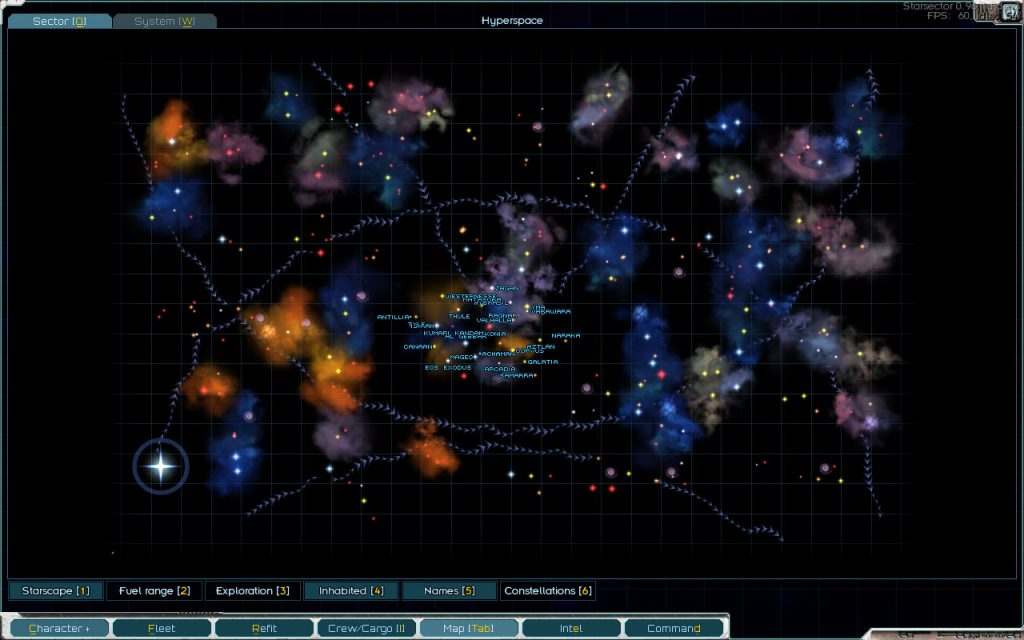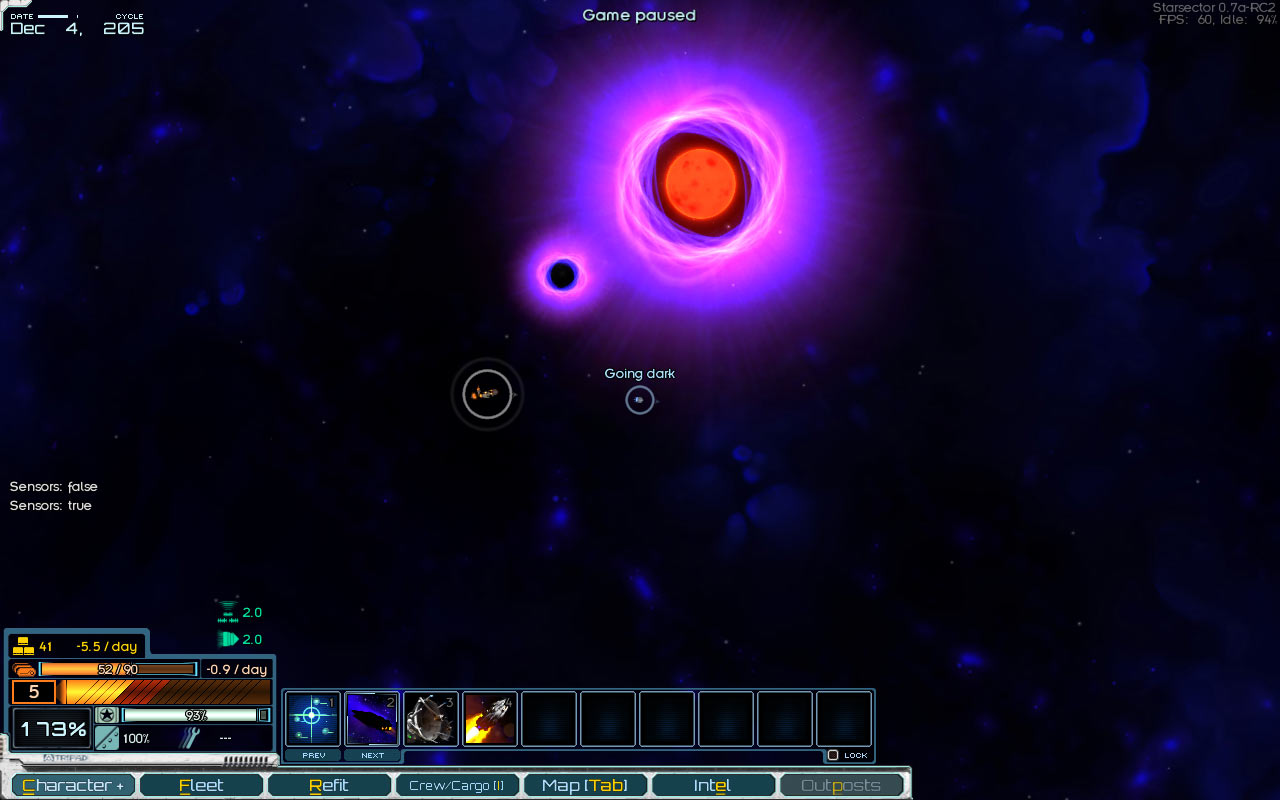Let’s talk about the options the player has for moving around the Sector! For a long time, the set of movement mechanics has been incomplete, with additions made here and there (slipstreams, unlocking the use of the Gates), but still lacking some of the options that in my mind would make up the final picture. Perhaps “final” isn’t the right word – things will certainly be tweaked as necessary – but it’s about having a more complete set to tweak, rather than what has been, until now, a partial implementation.

Read the rest of this entry »
I’d mentioned transponders in the last couple of posts, mostly in the “here’s roughly what they do, details TBD”. Well, I’ve spent the last week or so working on it, and now it’s time for those details!
A transponder, much like in real life, is a shipboard device that sends out identifying information on a public channel. Smugglers, pirates, and other shady types find some advantages from turning it off, offset by increased attention from patrols. Conceptually, each ship has one, but in terms of game mechanics, it’s controlled on a fleet level. All ships in a fleet either have their transponders on or off.
Because I’m pretty sure someone will bring it up: you could probably squeeze some nuance out of allowing per-ship transponder control. However, I think it’s better to keep individual mechanics as simple as possible and get complexity out of the interactions of different mechanics instead. It’s the same idea as having a few simple rules that work together vs one really complicated rule. In the first case, you have a game. In the second, you have a mess.
Overview
Before diving into the complexities, let’s summarize what the transponder does, mechanically:
Turning the transponder off attracts the attention of patrols, makes you harder to see, reduces the reputation impact of your actions, and allows trade that might not be possible otherwise due to your reputation.
I think it’s interesting to see how something that can be summarized relatively succinctly nonetheless gets very involved in the details. With that in mind, let’s dive into those.

Read the rest of this entry »
The focus of the last couple of weeks has been on improving campaign gameplay. In practical terms, this means giving the player some choices as they move from point A to point B, and making sure there can be a positive or a negative outcome depending on how well the player does. A simple case, useful for thought experiments, is one fleet trying to chase down another – what options does each of them have, and how do their choices interact?
Before answering that, it’s a good idea to take a step back and consider what kind of feel we’d like the campaign to have. Should it be more visceral, or more detached? The answer is going to drive the design of the gameplay mechanics. For example, if we want visceral-feeling gameplay, then giving the player more direct control of the fleet might be a good idea (e.g. WASD vs click-to-move), and we might also want to give the player less time to react.
Now, I happen to think that this isn’t the right way to go, and something more detached, slower, and tactical would work better. The player is going to be doing all sorts of things in the campaign that don’t involve dodging or chasing enemy fleets, and a visceral-type design could easily bleed over into those activities. We don’t want “interact with market” to be a nail-biting experience, or even something that’s a challenge to do – at least, I definitely don’t. Some of this comes down to personal preference; much of any design does – but now that it’s settled on, let’s take a look at how we’re going to go about it.

Read the rest of this entry »

























